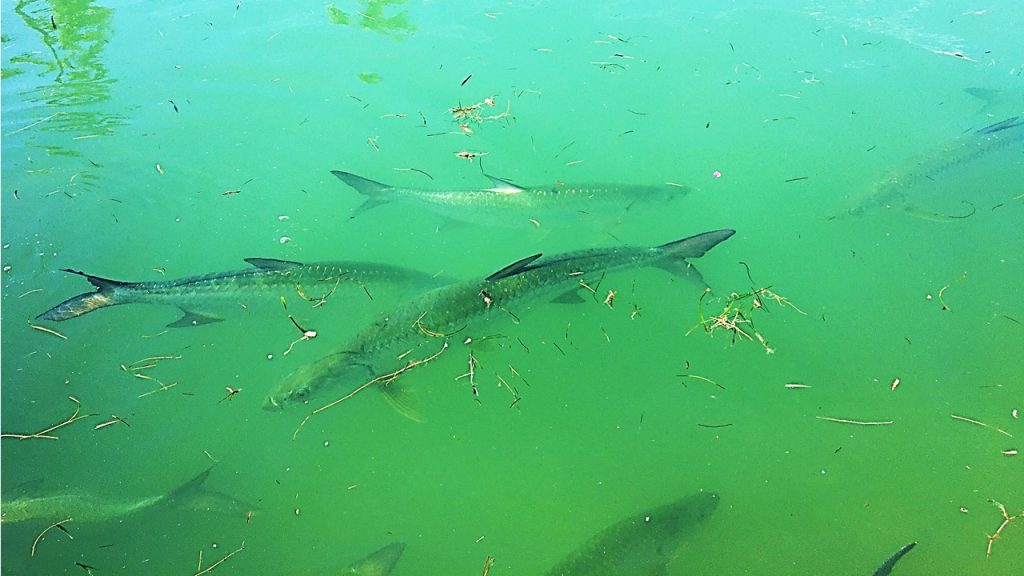January 2021
2020-2021 were “years of the pandemic” and with all international travel cancelled and domestic tour groups deemed “unsafe” for “Social Distancing”, we began to consider exploring places closer to home and in a more personal way. When the 2020 Great Ohio Bicycle Adventure was cancelled in April of 2020, we became serious about planning a “self-sagging” bicycling trip to explore the Florida Keys. Rocky had not visited the Keys for over 45 years and Julie had only been to Key West once. We decided to get hotel rooms at strategic locations along the route for evening overnights, and to use the intervening days to explore the areas north and south of our hotels by bicycle. Much of route is part of the Florida Keys Overseas Heritage Trail (FKOHT) and features more than 90 linear miles of existing trail paved in segments along a planned 106-mile corridor from Key Largo (mile marker 107) to Key West (mile marker 0) with no fees. The Heritage Trail is a mix of “Old US 1” Highway road and bridges, old paved and restored railroad bridges, paved utility service trails and road-side bike paths. The FKOHT is a multi-use bicycle and pedestrian resource that serves as a recreational and alternative transportation corridor for the Florida Keys. It parallels U.S. Highway 1, which is designated as a National Scenic Highway and All-American Road and will eventually incorporate 23 of the historic Flagler Railroad bridges, although only about half of them are currently accessible to the public.
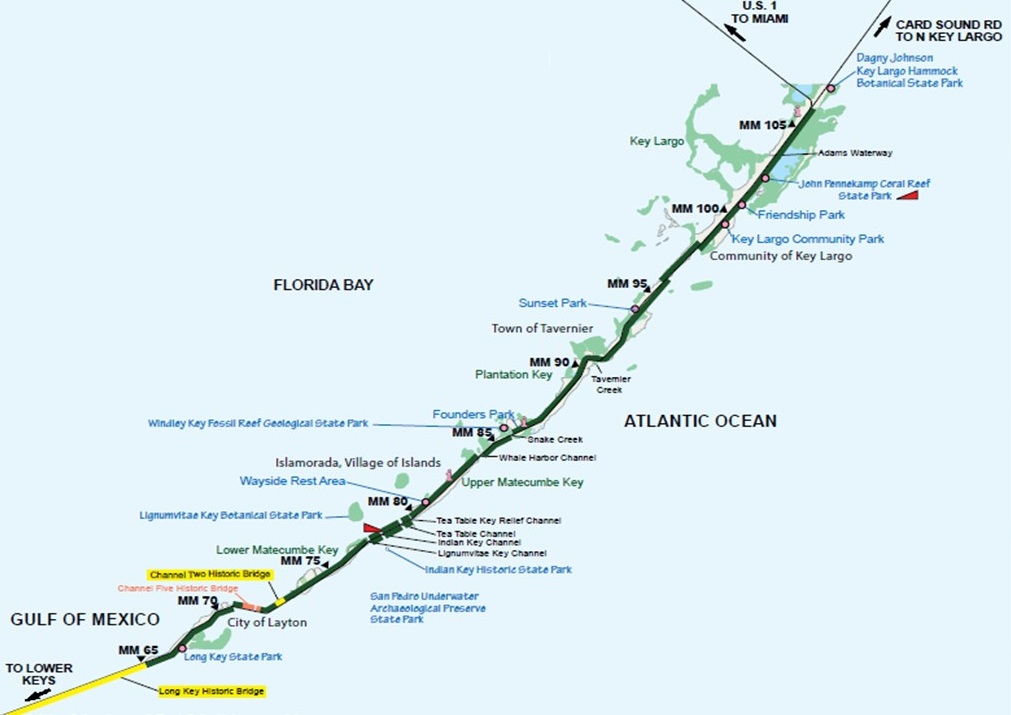
Since we live over 5-hours away from Key Largo, we planned the trip to take 8-days with travel. At the last minute, my wife’s cycle-enthusiastic sister and brother-in-law from Ohio decided to drive down and join us on the adventure. We left our house with two cars and 4 bicycles on Friday and made the drive to Key Largo where we visited the Key Largo Visitor’s Center, had a taco & nacho lunch on the dock at “Jimmy Johnson’s Big Chill Restaurant”, and then entered and explored John Pennekamp Coral Reef State Park, the first undersea park in the country. The weather was too chilly and windy for us to enter the water that day, but we explored the many beaches and hiking & nature trails by foot before leaving to check into our hotel, the nearby Hampton Inn, (mile marker 102), with its own bayside beach, and pool. That night we took a quick swim before walking to Alfredo’s Restaurant for a shrimp meal and then relaxing with wine and a lively game of cards back at the hotel.


Saturday morning, we had breakfast at the hotel at 7:30am, checked-out, and then boarded our bicycles to explore the Heritage Trail traveling south. The trail here was a paved path off from the road that took us over three restored bridges dedicated to fishing, pedestrians, and bicycles. The trail then moved slightly east on to “old US 1” in Tavemier, where a series of ocean-side estates with peacocks and private ocean access dominated. It was clear that this area had suffered previous hurricane damage as entire tracks of former housing complexes were now large vacant lots. While cycling, our next night’s hotel, “The Sands of Islamorada” (located at mile marker 80), called to inquire about our “check-in”, and since by then we were already on Upper Matecumbe Key and only 2-miles away, we rode to there and completed the required paperwork. We then turned around and began the ride back and soon passed again the Hurricane Memorial at mile marker 81.5. The Hurricane Monument on Islamorada relates the experience of the devastating 1935 Labor Day storm and serves as the burial place for the ashes of many of those who died.
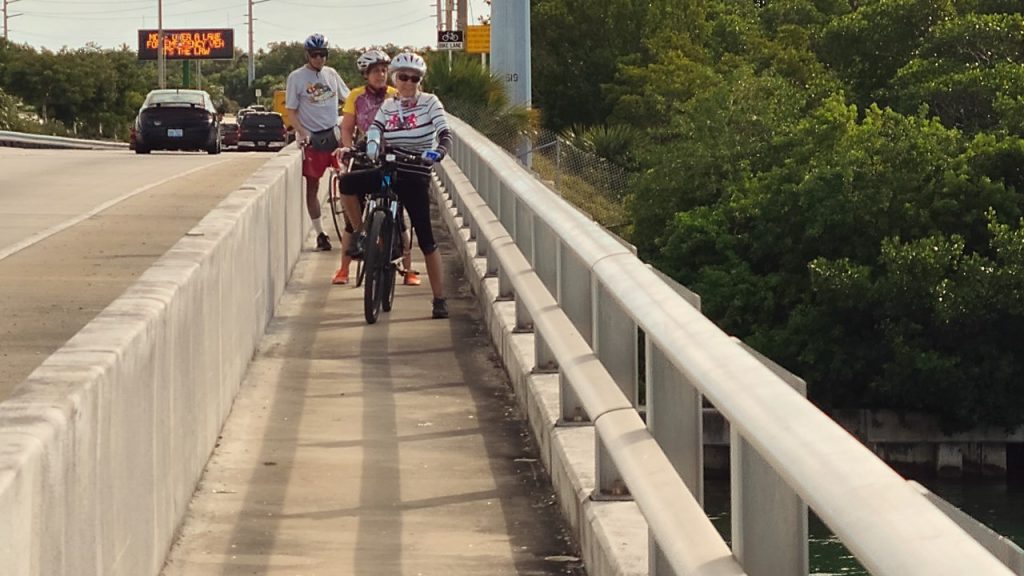
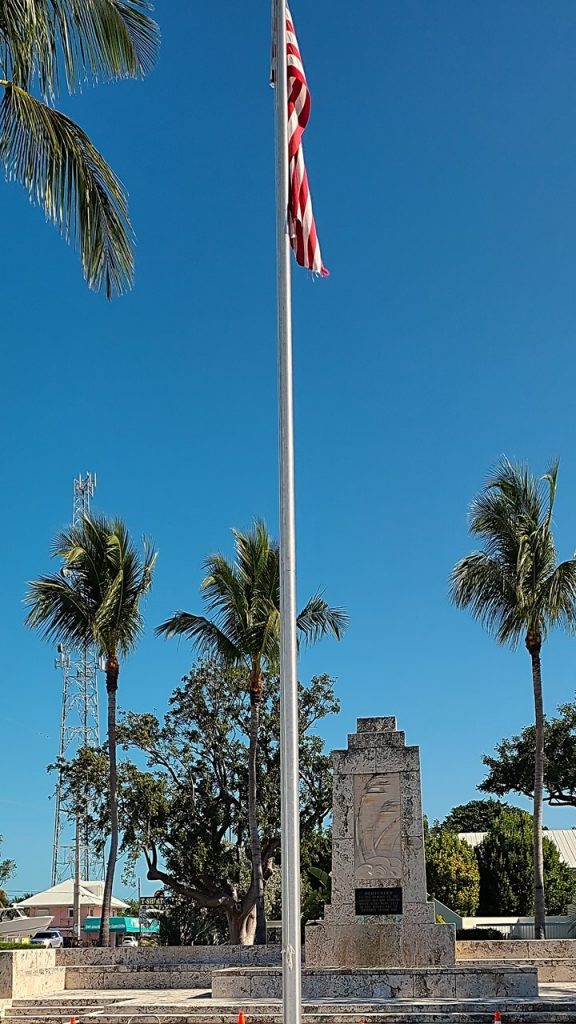
Islamorada was reached by the Flagler’s Florida East Coast Railway in 1907 and served as the headquarters area for the over 600 World War I veterans that were sent to Lower Matecumbe camps in 1934 to work on building the automotive bridges that would connect the islands as the Overseas Highway. The island had been originally settled by the Russell Family in 1850 who grew pineapples, melons and tomatoes for transporting north. In the 1870’s, the Pinder Family took a land grant in the center of the island. When Henry Flagler’s Chief Railway Engineer, William J. Krome, reached the island, he built a home there, but needed to give the town a name to justify having a Railway Station and chose “Island Home” after Pinder’s boat. The island’s produce industry flourished until the railway was completed to Key West in 1912 and inexpensive pineapples and limes began being transported in railway cars from Cuba via ship to Key West where they we taken up the East Coast. After that, Islamorada’s industry focused on tourism and fishing.

We continue back to mile marker 82 to eat lunch at the “Lorelei Restaurant” where we sat bayside on the dock watching 3-5 ft tarpon cruising by, and people-watching customers arriving by car, boat and even seaplane! We then biked back to our cars still at the hotel at mile-marker 102, before loading-up and driving south to our Islamorada hotel. However, Saturday night traffic on U.S. 1 in the keys was very heavy, and the drive took over an hour before we reached our destination. “The Sands of Islamorada” is a completely remodeled and modernized version of a 9-room “mom-and-pop beach motel” located ocean-side in Islamorada. The owners live on-site and only staff the office for limited hours, but they were attentive and accommodating, and their pool with dual hot tubs were accented by their 8-McCaw enclosure and local 3-ft long iguanas. After showers and settling, we all walked 3-blocks south to “The Lazy Days Restaurant” – a “hopping” place where we luckily got the only remaining table outside during “happy hour”. Here we enjoyed drinks, calamari, conch fritters and a large brie cheese-platter covered with lingonberries. At their nearby dock, one could feed the gathering tarpon or get up-close to the resting pelicans. After dinner, we relaxed in the hotel’s hot tub and recounted our first day’s 44-mile ride.

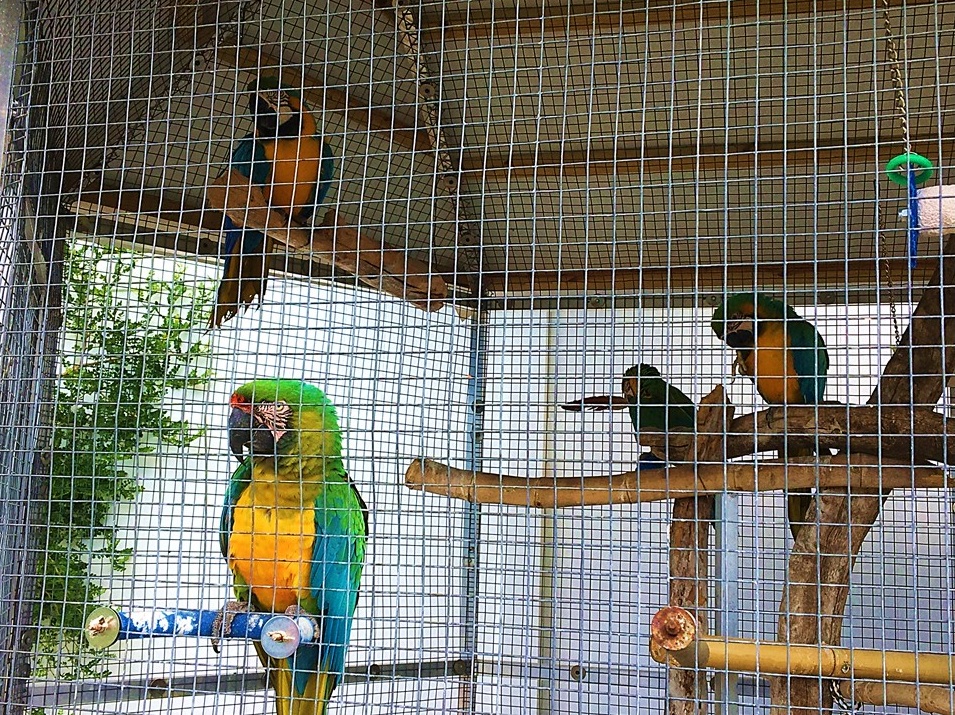
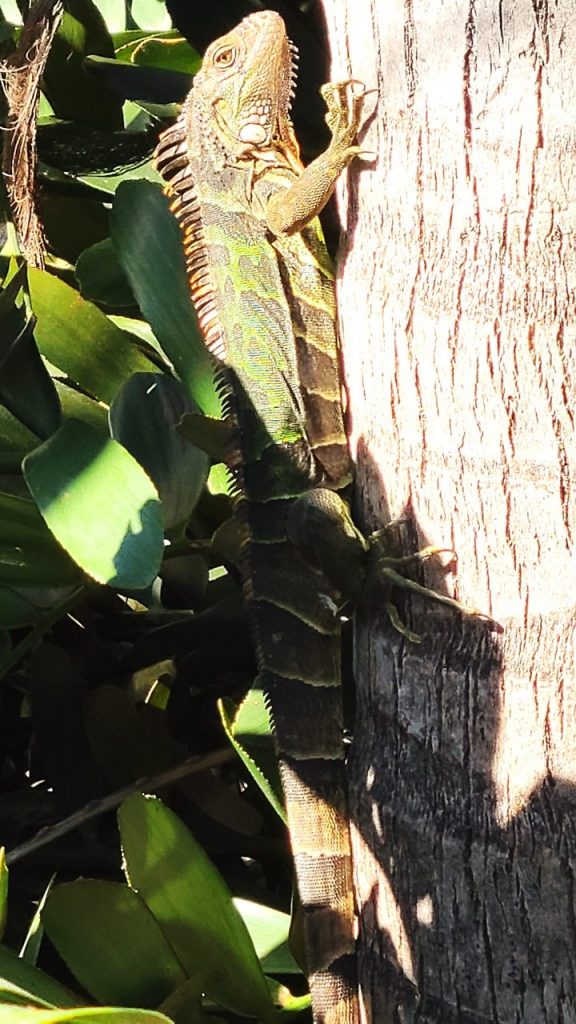
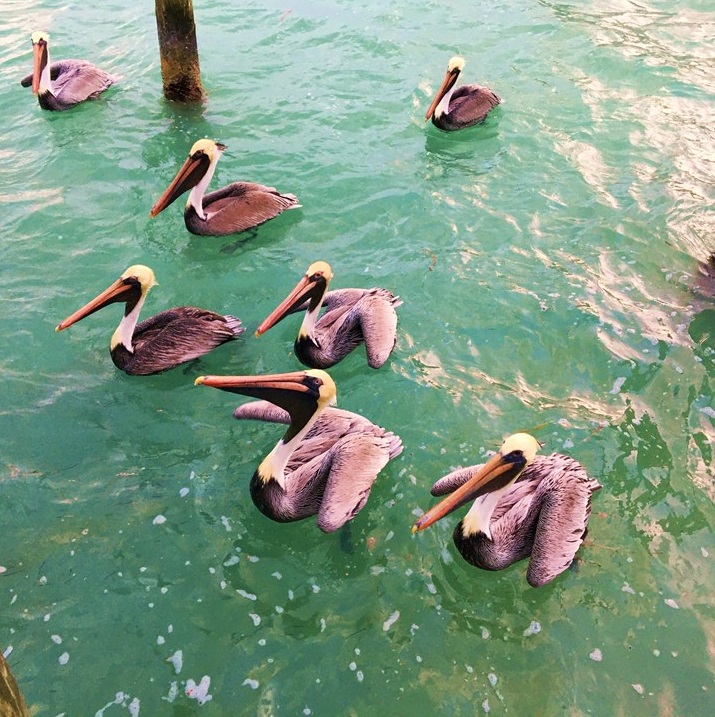
On Sunday, our plan included eating breakfast at the “Midway Café” located just ¼-mile north of the hotel on U.S. 1, and then bicycling south. After a large breakfast outside among the many locals that eat there, we assembled at the hotel and set off south and, after a series of small bridges, the trail exited once again onto old U.S. 1, this time on the west side of the road, and again served as the access road for the local estates along the bays of the Gulf of Mexico side. Since it was Sunday morning, the trails and paths were full of “morning walkers” enjoying the weather, getting exercise, and walking their dogs. After crossing a high-rise bridge, we arrived at the town of “Layton” where we took a quick break. From there, the bike trail got very bumpy and was in serious disrepair for a way before we reached Long Key and the Long Key State Park entrance. South of that, at mile marker 71, the bike path entered the ocean-side Long Key Pedestrian Bridge – the second-longest bridge of Henry Flagler’s railroad. Along the bridge there are twenty cantilevered fishing platforms, (“bump-outs”), added to each side to provide space for both fishing and bicycles. Although this part of the route demands riding slow to avoid pedestrians, it was enjoyable watching all the families fishing and having a fun day on the bridge. We continued south along the path on mostly excellent bridges and paths past Conch Key, Little Duck Key and Grassy Key into Marathon Key, including where the path went west into the mangroves following the Utility service path. Along the way, we stopped to check-out different restaurant menus before turning around at mile marker 53, and then stopping for lunch at “The Island Fish Company” located bayside at mile marker 54. The restaurant had a special Sunday lunch menu that included shrimp tacos and margaritas. It was not crowded, and we sat on the dock overlooking the water and enjoying the sun. On the way back, we retraced our path except for the “bumpy” section which we avoided. We stopped for drinks and a bathroom break at a convenience store in Layton and explored Anne’s Beach along a lovely boardwalk at Mile Marker 73, and then road back to the hotel using the bike paths. All together, we cycled over 54 miles, and at the hotel, we met some northern visitors and enjoyed the hot tub. That night, we returned to “The Lazy Days” for Happy-Hour drinks and eats before returning to the hotel room for wine and another game of cards.
